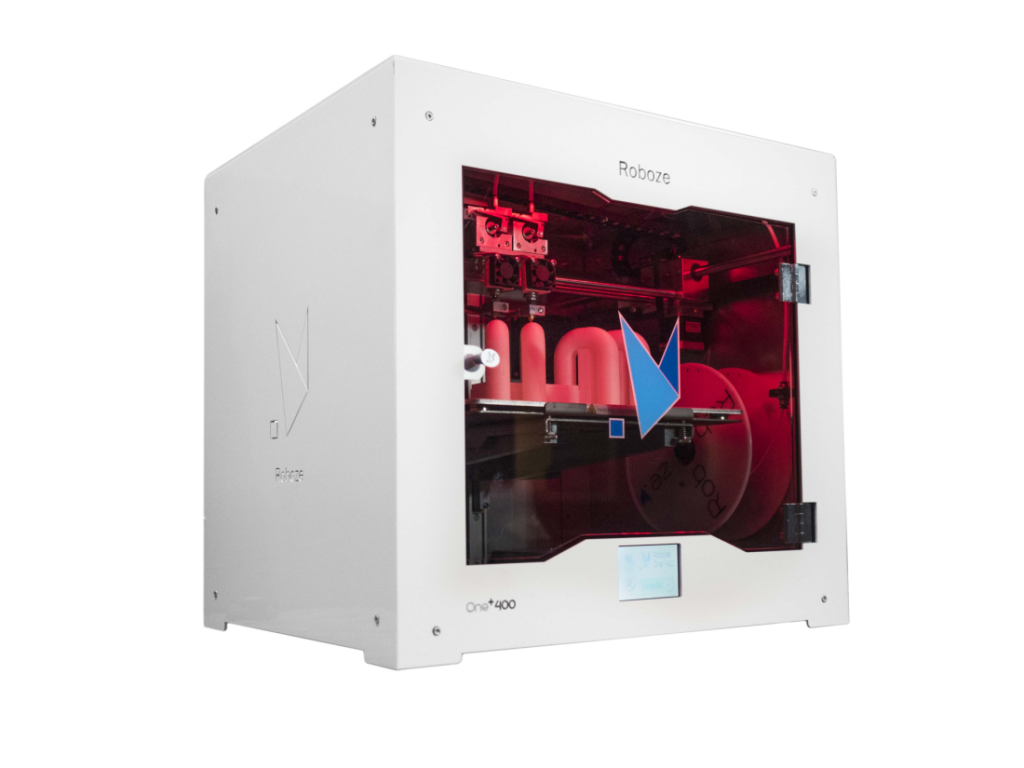
These materials represent a real breakthrough in terms of 3D printing applications as they are particularly stress and temperature resistant. PEEK (polyetherketone), in particular, is considered to be biocompatible and has a wide range of uses in the medical industry. Until recently these thermoplastics, which require extrusion temperatures close to 400°C, were not available as filament (although EOS already offered PEEK as a powder for its $200K+ SLS systems) for open material systems and were considered to printable only through Stratasys’ patented sealed chamber professional FDM machines.
Taking a PEEK at the future of desktop 3D printing
Altogether, the Roboze One+400 can employ up to 12 different materials on a double extruder. Along with PEEK and PEI, these also include Carbon PA (a Nylon6 filled with carbon fibers), PC/ABS and TPU, many of which can be used for advanced industrial and medical applications, including food processing, aerospace, automotive, defense, electronics & semiconductor, oil & gas, nuclear & hydroelectric, space technologies and cable production.
PEI (polyetherimide), for example, is considered a high-performance engineering polymer, as it possesses very specific physical and chemical properties: it is ultra resistant to hydrolysis and acid solutions, offers excellent thermic performance, including a very high operating temperature and the ability to withstand repeated autoclave cycles; it also has excellent mechanical properties. Furthermore, the support material deposited by the second extruder makes it possible to build more geometrically complex shapes.
“By enabling the use of advanced materials, we offer users a powerful yet affordable solution, together with the advantages of an ‘easy-to-use’ desktop 3D printer,” said Alessio Lorusso, CEO at Southern Italy based Roboze. “This will open up a wide range of new possibilities, especially for SME’s for a variety of applications in several different industries requiring only a limited amount of investments.”
The new Roboze One+400 builds on the proven and patented “belt-less” mechatronic structure implemented in Roboze’s first machine, the Roboze One, by integrating a 32-bit processor and a 3.5″ color touch screen for on-board controls. The company internally produces up to 70% of its 3D printer components through CNC machines in its production facilities, ensuring its 3D printers need very little maintenance and are built to last over time.
The new extruder can reach maximum temperatures of 400°C, thus preventing flaws linked to filament jamming and stringing. To avoid warping and deformation when 3D printing at such elevated temperatures, the Roboze R&D team managed to create an innovative solution that carefully controls temperatures of the extruded materials within the printing chamber. In fact the machine itself was designed to suit each specific material requirement.
The new Roboze One+400 is bound to open several interesting new possibilities for affordable 3D printing of advanced thermopolymers. Roboze has already demonstrated that it is capable of reaching a printing precision that makes its 3D printers a viable option for medical and even dental applications. By actively collaborating with Italy’s National Research Center (CNR) the company has been developing materials which are further expanding its business opportunities, while consolidating its international presence by offering a unique 3D printing solution. In the ever more competitive desktop 3D printing sector, the company is only on its second 3D printer model but it has already had quite an impact on the market and seems destined for more commercial success.